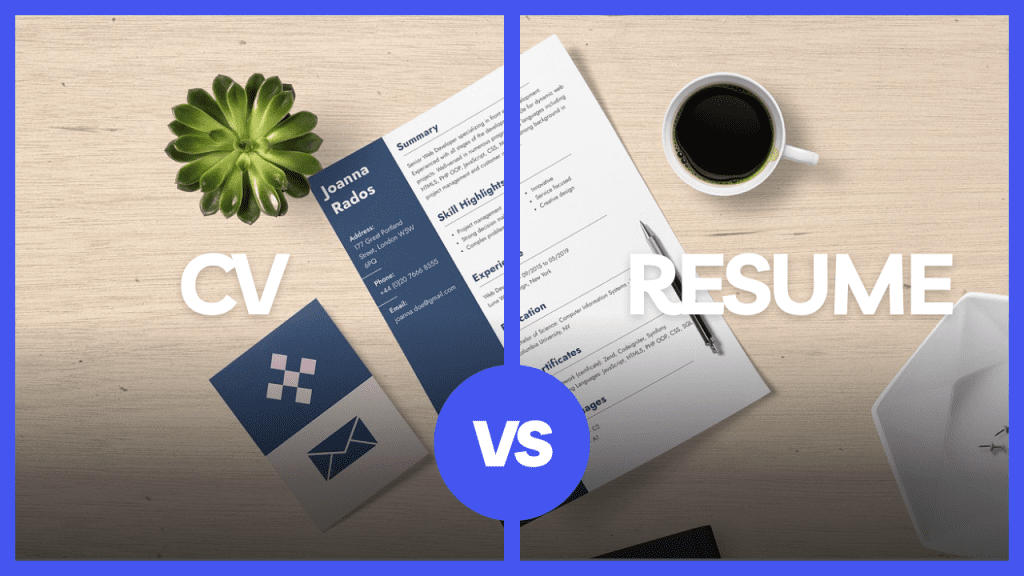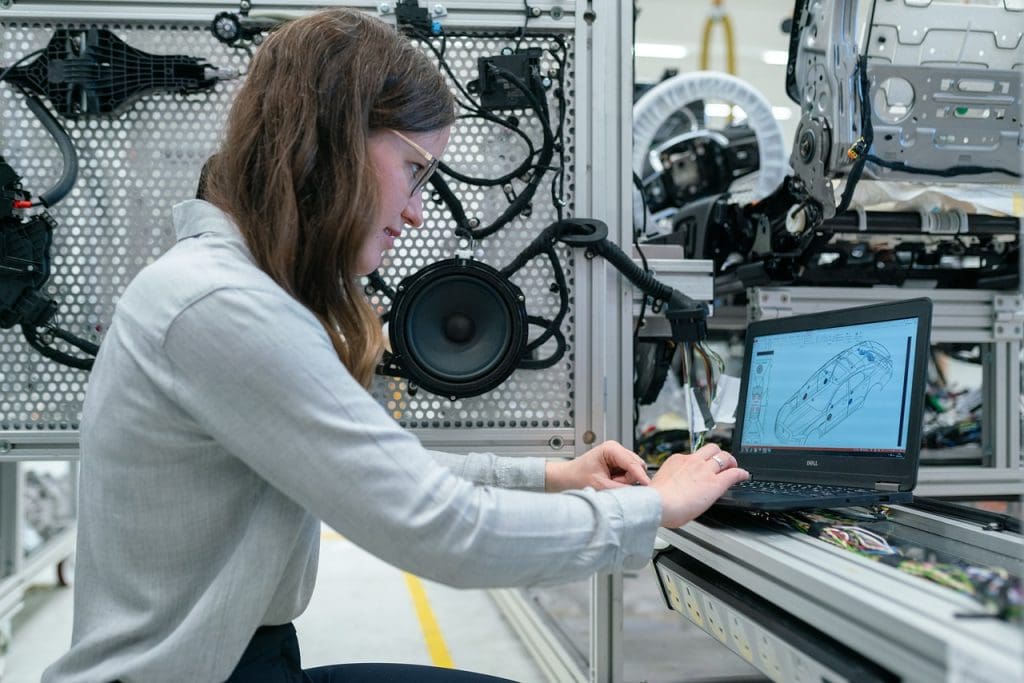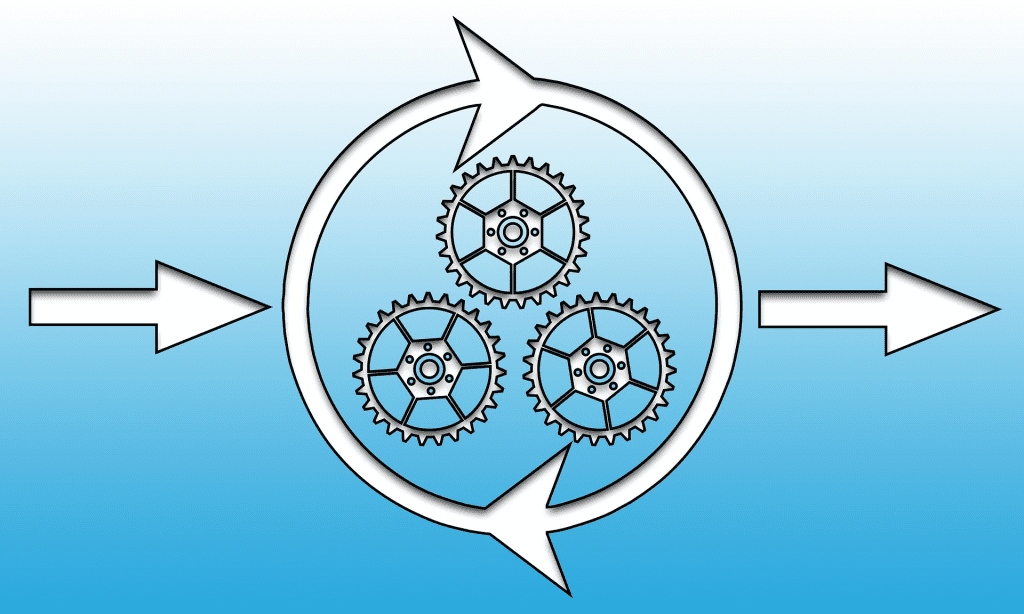
Australian engineering job seekers often get confused about CVs and resumes. These terms get used interchangeably in Australia, but knowing their differences can affect your job search success by a lot. Research shows that tailored applications receive 42% higher response rates from recruiters.
Your choice of format really matters. Academic research positions need a detailed 3-6 page CV. Industry roles work better with a concise 1-2 page resume. The difference between these documents becomes even more significant when you’re applying for jobs internationally. UK and European employers prefer CVs, while US and Canadian companies ask for resumes.
This piece will help you find the right time to use each format. You’ll learn how to structure your engineering qualifications and what content works best to make an impact in Australia’s job market.
Understanding CV vs Resume in Australian Engineering
Before we dive into the comparison, let’s take a moment to discuss what a CV and a resume are and their respective roles in the Australian engineering sector.
CV (Curriculum Vitae)
A CV, short for Curriculum Vitae (Latin for “course of life”), is a comprehensive document that provides a detailed overview of an individual’s professional and academic history. It typically includes:
- Personal information
- Educational background
- Work experience
- Research and publications
- Skills and qualifications
- Awards and honors
- Professional memberships
- References
CVs are usually longer and more detailed than resumes, often spanning multiple pages. They are commonly used in academic, scientific, and research fields, as well as in some international job applications.
Resume
A resume is a concise document that summarizes an individual’s professional background, skills, and qualifications relevant to a specific job or career goal. Key features of a resume include:
- Brief personal information
- Career objective or summary
- Work experience (usually limited to the most recent and relevant positions)
- Education
- Key skills
- Achievements and accomplishments
Resumes are typically shorter than CVs, usually limited to one or two pages. They are tailored to highlight the most relevant information for a particular job application and are commonly used in most industries for job applications.
Role in Australian Engineering
In the context of Australian engineering, the distinction between CVs and resumes is particularly significant:
- Engineers Australia Requirements: Engineers Australia, the professional body for engineers in the country, typically requires CVs rather than resumes. This is because they need a more comprehensive view of an engineer’s background and capabilities.
- Detailed Project Descriptions: CVs for Australian engineering positions often include in-depth descriptions of projects the engineer has worked on. This allows for a thorough assessment of the engineer’s technical expertise and problem-solving abilities.
- Technical Contributions: Unlike standard resumes that focus on achievements, engineering CVs in Australia emphasize technical contributions. This includes detailing specific technologies used, methodologies applied, and innovations developed.
- Career Progression: The longer format of a CV allows Australian engineers to showcase their career progression more effectively, demonstrating how they’ve grown in their roles and taken on increasing responsibilities.
- Skill Verification: The detailed nature of CVs helps in verifying the skills and competencies required for engineering roles in Australia, which can be crucial for both local and international applicants.
In summary, while resumes are used in many industries in Australia, the engineering field, particularly when dealing with Engineers Australia, often requires the more comprehensive CV format to fully capture an engineer’s qualifications, experience, and technical expertise.
Key Differences for Engineers
Engineering CVs and resumes differ in several ways:
- Length and Depth: Engineering CVs span 3-5 A4 pages, while resumes stay within 1-5 pages
- Technical Detail: CVs need complete project details and actual contributions, but resumes focus on specific relevant achievements
- Structure Focus: CVs start with educational achievements, while resumes lead with work experience
- Documentation Style: CVs include complete project metrics, but resumes focus on role-specific accomplishments
When to Use Each Format
CVs are the preferred format for academic positions, fellowships, or research grants in engineering. On top of that, they become essential to apply for Engineers Australia assessments. These assessments need detailed documentation of technical competencies and industrial experience.
Resumes fit better in industry positions, especially when you have specific engineering roles in mind. You can customize resume content based on job requirements and show relevant technical skills and project achievements.
Your choice between a CV and resume should match the position’s requirements. CVs work better for engineering roles that need extensive technical documentation, like those requiring Engineers Australia assessment. Resumes prove valuable for positions that focus on specific technical skills or project management abilities.
Essential Components for Engineering Documents
Australian industry standards require specific components to build effective engineering documentation. Your CV and resume just need careful attention to technical presentation, project details, and professional credentials.
Technical Skills Presentation
Your engineering documents should showcase technical competencies prominently. Create a dedicated section for software proficiency that highlights your experience with CAD software, programming languages, and industry-specific tools. We arranged the technical skills presentation to focus on engineering packages and computing capabilities that match role requirements.
Project Experience Format
Your project documentation should include precise metrics and measurable outcomes. Each engineering project entry should detail:
- Role responsibilities and scope
- Quantified achievements (using percentages or numbers)
- Technical challenges addressed
- Implementation methodologies
- Project timeline adherence
Engineering projects therefore require complete documentation of technical contributions. To name just one example, mechanical engineers should specify equipment optimization results, such as achieving a 12% reduction in downtime over defined periods.
Certifications and Licenses
Professional certifications carry substantial weight in engineering documentation. You should include certifications that verify technical expertise and industry recognition. Engineering credentials should list:
The certification title with standard abbreviations, the issuing organization, date you got it, and renewal status if applicable. These certifications like Chartered Engineer (CEng) or industry-specific credentials show your ongoing professional development.
Documentation for Engineers Australia assessment should demonstrate a minimum of five years of engineering experience within the previous seven years. You should include detailed records of technical competencies and industrial experience to meet these requirements.
Crafting Your Engineering Experience

Engineers must take different approaches to showcase their experience in CVs and resumes. Your technical documentation should highlight measurable impacts and verifiable achievements.
Technical Achievements
Technical documents in engineering just need solid proof of your capabilities. Numbers speak louder than job descriptions. A mechanical engineer’s portfolio might show how they cut equipment downtime by 18% with better maintenance schedules. Your technical accomplishments should include specific metrics that show how you streamlined operational efficiency.
Project Metrics
The SMART technique will give a sharp edge to your engineering achievements. You might have managed AUD 6.12 million projects and finished them three months early. We focused project metrics on:
- Cost reductions and efficiency improvements
- Timeline adherence and schedule optimization
- Team leadership and resource management
- Technical problem-solving outcomes
Software Proficiencies
Technical skills are the foundations of engineering documentation. Your expertise in industry tools deserves special mention. Engineers should excel at:
Computer-Aided Design (CAD) software with top-level certifications. Mathematical modeling to predict system behaviors under various conditions. Data analysis and visualization tools help present complex findings. Programming skills enable control systems and task automation.
Your engineering experience documentation should spotlight real achievements with solid metrics. A project management example might read “led 8 engineers” or “project management – planning, budgeting and control”. Each technical achievement connects to business results, showing how you deliver measurable outcomes in engineering roles.
Document Length and Structure
Australian engineering documents follow specific length patterns that differ by career stage and document type. Australian employers expect longer documents than international standards and provide specific guidelines for CVs and resumes.
CV Page Count Guidelines
Engineering CVs in Australia range from three to five A4 pages. This length gives enough room to detail technical expertise and project achievements. Senior engineers and executives can write CVs up to 10 pages. This extended length suits professionals with extensive experience and notable achievements.
The document’s font size plays a significant role. Standard text should be 11 or 12-point. The document needs clear spacing and dot points to boost readability. Recent experience matters most in engineering CVs. Positions older than 10 years need only brief mentions.
Resume Length Requirements
Resume length varies based on professional experience:
- Entry-level engineers and graduates: 1-2 pages
- Mid-career professionals: 2-3 pages
- Senior engineers: 3-5 pages
Australian employers prefer 2-page resumes for internships and graduate programs. Experienced engineering roles need about 4 pages. The content should highlight relevant qualifications and experiences in a readable format.
File formatting matters as much as length. Engineering documents should avoid graphics and fancy typefaces that might cause scanning problems. Electronic submissions work best in common file formats – PDF or standard word processing files.
Document structure must emphasize readability with adequate white space. Achievements from the last decade deserve detailed attention. Older experiences need only brief summaries. This approach keeps your engineering document current and aligned with modern industry standards.
Formatting for ATS Systems

Your engineering documents need proper formatting to pass through Applicant Tracking Systems (ATS). Research shows 90% of Fortune 500 companies use ATS software to screen candidates. This makes proper formatting a vital part of success.
Keywords for Engineering Roles
ATS software processes engineering documents by breaking them into sections. It converts the content into plain text and analyzes it against predefined keywords. The system scores documents based on keyword relevance. Documents that score 80% or above usually move forward to human review.
Engineering roles need these elements in your document:
- Technical certifications and specific software proficiencies
- Industry-standard terminology matching the job description
- Project management and technical skill keywords
- Location details for non-remote positions
The system looks at context, not just keyword presence. A phrase like “Managed a team of 10 engineers” scores higher than listing “management” under skills. Keywords in work experience sections carry more weight than other areas during screening.
File Format Requirements
Your engineering document must meet ATS compatibility standards. Word documents (.doc or .docx) are the safest choice, though some systems accept PDFs. The document should maintain these formatting elements:
Font Selection: Standard fonts like Arial, Calibri, or Times New Roman in 11-12 point size will give optimal readability for both ATS and human reviewers.
Layout Structure: Tables, headers, footers, and graphics can confuse ATS systems. Clear section headings like “Work Experience” and “Education” help the system categorize information better.
Document Organization: One-inch margins should be kept on all sides. Simple bullet points work best for lists. You can alternate between basic formatting techniques to keep it readable. Dates should follow one format – either MM/YYYY or Month Year throughout the document.
Documents with properly formatted technical achievements and project metrics get higher ATS scores. Research shows 75% of qualified candidates get rejected due to formatting issues. This makes these guidelines the foundations of success for engineering professionals in Australia.
Comparison Table
| Aspect | CV | Resume |
|---|---|---|
| Length | 3-5 A4 pages (up to 10 for senior engineers) | 1-2 pages (entry-level) 2-3 pages (mid-career) 3-5 pages (senior) |
| Technical Detail | Detailed project specifics and actual contributions | Explains specific relevant achievements |
| Structure Focus | Begins with educational achievements | Guides with work experience |
| Documentation Style | Provides detailed project metrics | Explains role-specific accomplishments |
| Best Used For | – Academic positions – Fellowships – Research grants – Engineers Australia assessments | – Industry positions – Role-specific applications – Project management positions |
| Project Documentation | Detailed documentation of each project component | Focus on relevant achievements and outcomes |
| Technical Content | Describes each project detail and technical contribution | Explains specific skills and achievements relevant to the role |
| Geographic Preference | Preferred in UK and Europe | Standard in US and Canada |
Conclusion
Engineers working in Australia’s job market need to know the difference between CVs and resumes. CVs work best for academic positions and Engineers Australia assessments with their complete 3-5 page format. Resumes are a better fit for industry roles because they pack relevant achievements into 1-2 pages.
You just need to pay attention to document formatting to succeed, especially with ATS requirements. Your chances of clearing automated screening systems improve by a lot when you use standard fonts, clear section headings, and arrange keywords strategically. Technical achievements should take center stage with solid metrics and project outcomes, whatever format you pick.
Pick between a CV and resume based on the role you want and your career goals. Academic positions work well with detailed CVs that show off research work. Industry roles need targeted resumes that highlight your technical skills. Getting professional help makes this easier – CDR Elite Writers specialists can help you create the perfect engineering CV or resume.
The Australian engineering sector values both formats, but each works differently. Now you can make the right choice about your document type and structure it well. This sets you up for success whether you’re heading for academia or industry.
FAQs
Q1. What’s the preferred document format for job applications in Australia: CV or resume? In Australia, both CVs and resumes are used, but resumes are generally preferred for most industry positions. CVs are typically used for academic roles, research positions, or when applying for Engineers Australia assessments.
Q2. How long should an engineer’s resume or CV be in Australia? For resumes, entry-level engineers should aim for 1-2 pages, mid-career professionals 2-3 pages, and senior engineers 3-5 pages. CVs are typically longer, ranging from 3-5 pages for most engineers, and up to 10 pages for senior professionals with extensive experience.
Q3. What key elements should engineers include in their job application documents? Engineers should focus on technical skills, project experience, and measurable achievements. Include relevant software proficiencies, certifications, and quantifiable project outcomes. Tailor the content to the specific job requirements and use industry-standard terminology.
Q4. How can engineers optimize their resumes or CVs for Applicant Tracking Systems (ATS)? Use standard fonts like Arial or Calibri in 11-12 point size. Avoid headers, footers, tables, and graphics. Incorporate relevant keywords from the job description, especially in the work experience section. Use clear section headings and maintain consistent date formatting throughout the document.
Q5. What’s the main difference between a CV and a resume for engineers in Australia? The main difference lies in the level of detail and focus. CVs provide comprehensive project details and technical contributions, often starting with educational achievements. Resumes are more concise, highlighting specific relevant achievements and leading with work experience. CVs are typically longer and more detailed than resumes.



